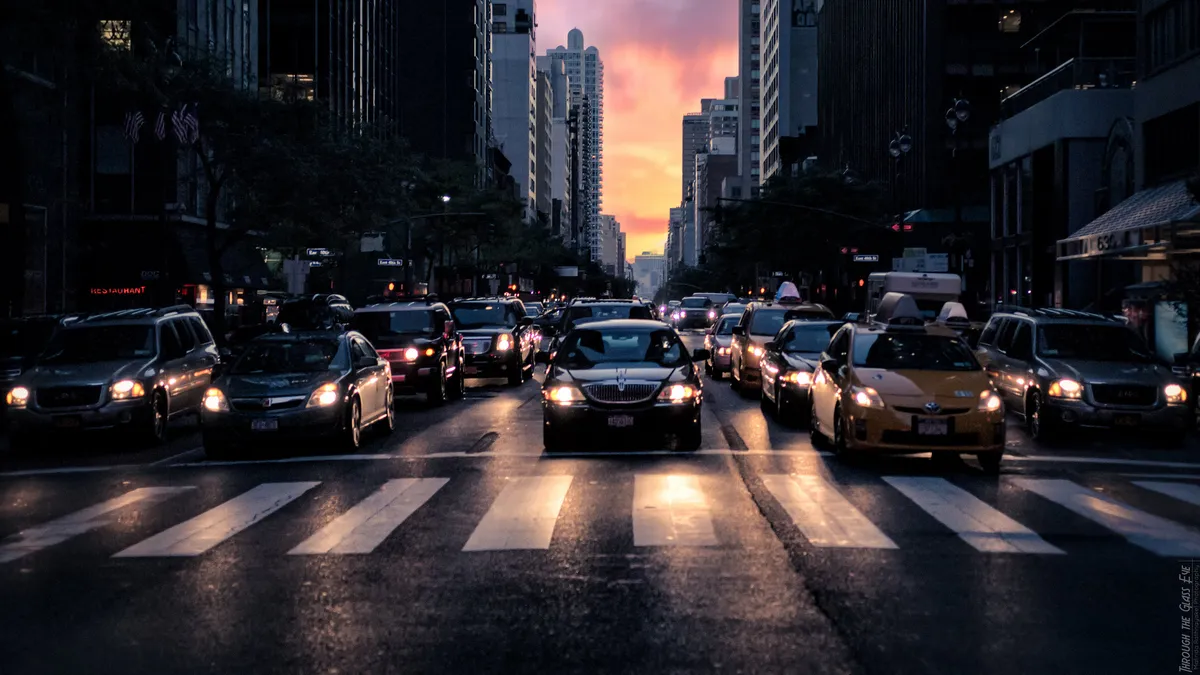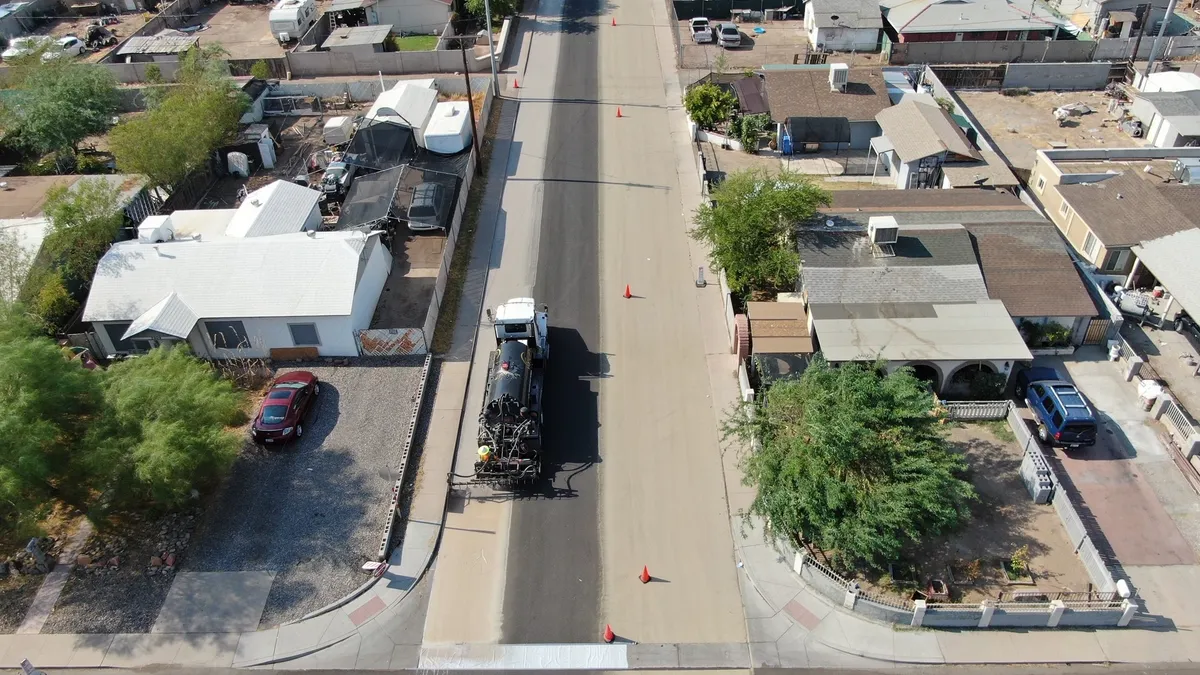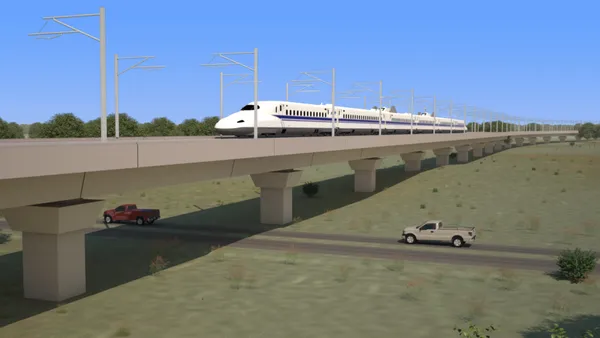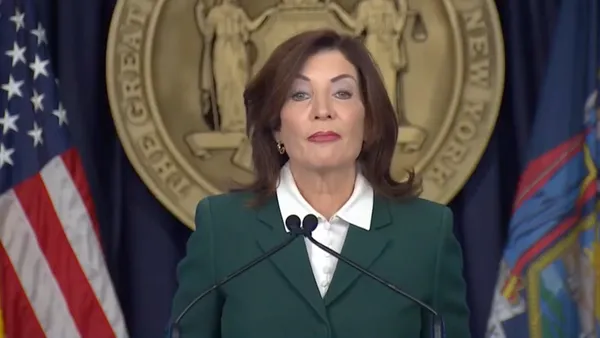Dive Brief:
- New data from the National Safety Council (NSC) found the U.S. traffic fatality rate jumped 23.5% in May, compared to the year prior, despite the number of vehicle miles driven in that month dropping 25.5% amid pandemic-related stay-at-home orders.
- "We are facing a public health crisis of significant proportions," NSC President and CEO Lorraine Martin said in a roundtable discussion regarding the data. While causation of this increase has not been officially determined, Martin and her fellow panelists cited increased stress and anxiety among drivers; increased alcohol sales and use of marijuana; more free time, particularly for teen drivers; and adjustments to state laws regarding helmet and seatbelt use.
- In response to these estimates, NSC developed a playbook of recommendations and guidance for employers to reference as residents and commuters return to the workplace. The playbook centers on providing safe routes to work; prioritizing roadway safety; and increasing safety among transportation workers.
Dive Insight:
Millions of Americans have been under varying degrees of stay-at-home and social distancing orders since the novel coronavirus (COVID-19) pandemic washed over the U.S. in March. The NSC was optimistic that reducing the number of vehicles on the roads would result in a "traffic silver lining" of more lives saved, Martin said — yet the data painted a different story.
"The pandemic has actually exposed our national road safety culture for what it really is: deeply flawed and unfortunately in need of some immediate action," Martin said. "It’s clear that our open roads have created somewhat of an open season for reckless driving."
While there are a number of theories on why these preliminary estimates are so high, not enough time has passed for "anyone to legitimately claim that we truly understand why we’re seeing these trends," said Jake Nelson, director of traffic safety advocacy and research at AAA, during the roundtable discussion. He was vocal about the dangers of impaired driving, particularly as studies show Americans have increased alcohol consumption since March. NSC has recommended states lower the legal limit for blood alcohol content (BAC) while driving to 0.05%, down from the federal limit of 0.08%.
Nelson expressed similar concerns around marijuana legalization — a move more jurisdictions may consider in the next legislative session as they seek new sources of tax revenue.
"AAA is one of the national safety organizations that have come out in opposition to legalizing marijuana for fun when highway safety is on the table," Nelson said. "That's something that we've got our eye on, and we're prepared to double down."
Jonathan Adkins, executive director of the Governors Highway Safety Association (GHSA), said on the call that speed is another "dramatic problem" contributing to the increased traffic fatality rate, especially as drivers take advantage of open roads. Yet a number of jurisdictions have recently looked to increase speed limits, which Adkins said could be consequential.
"Speed typically and historically has been a forgotten issue in highway safety," Adkins said. An estimated one-third of all traffic crashes are due to speed, he said, "yet we've never given it the priority that it really deserves ... because everyone speeds. We all do it, we're all guilty of it and there's never been public support, or really doing anything serious about it."
Adkins said it is "absolutely critical" for law enforcement officials to crack down on speed limits, but that it's equally critical for such enforcement to be fair and data-based. He said recent conversations around policing and racial injustice will impact enforcement practices, and GHSA has a working group to help mitigate related challenges.
"Law enforcement is one of the most critical tools we have in highway safety. We think that most stops are fair and equitable, we want to get rid of the ones that aren't, and we want to help train and support law enforcement so they are enforcing the law correctly and fairly," Adkins said. "But the Governors Highway Safety Association, as well as, I hope, all of our traffic safety partners, do not support defunding of law enforcement."
While it will take some time for NSC to analyze these new findings and determine causation, Martin said she is encouraged by efforts among stakeholders, particularly the National Highway Traffic Safety Administration (NHTSA), to educate the public on roadway dangers during the pandemic. She also is urging traffic safety advocates and government officials to "double down on the count of measures that we know keep you safe when you drive a car," such as appropriate BAC levels and seatbelt laws.
"Let's make sure we come out of this stronger," Martin said, "because there’s really no other choice."











